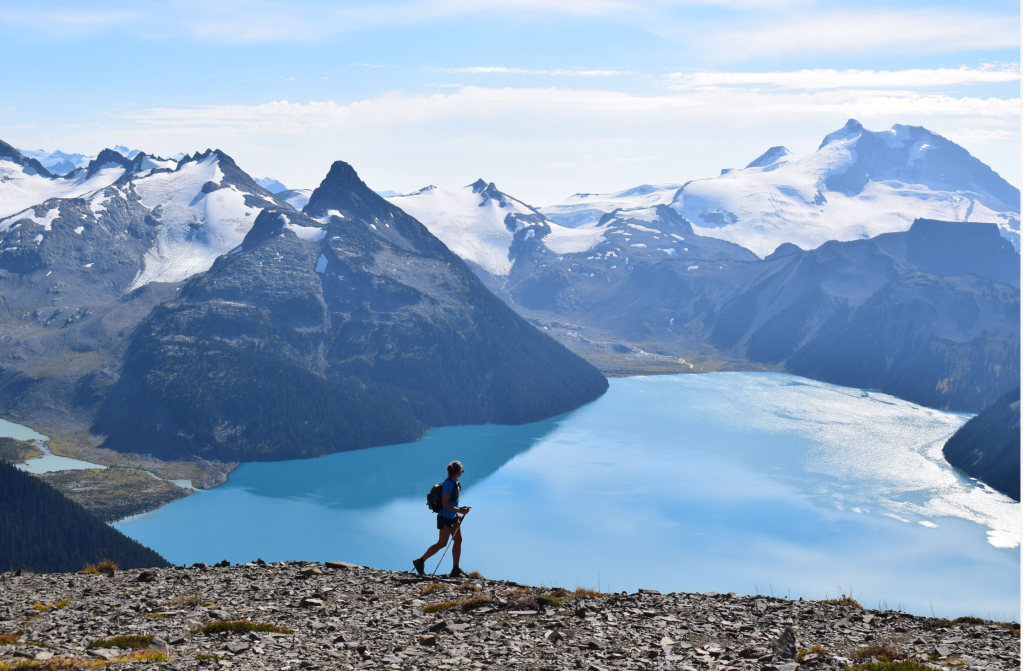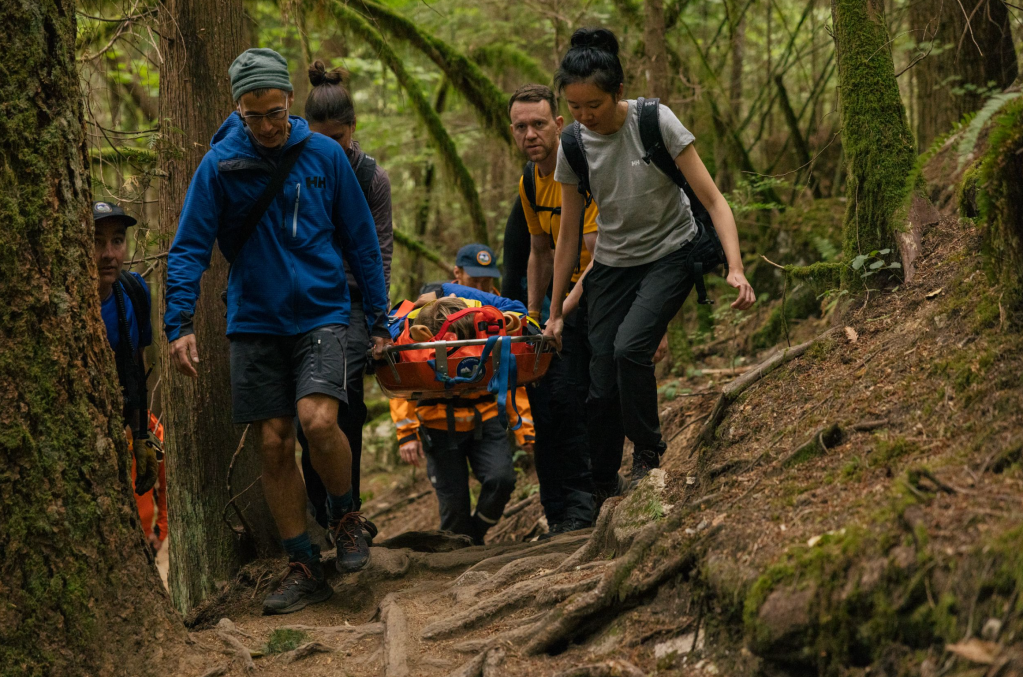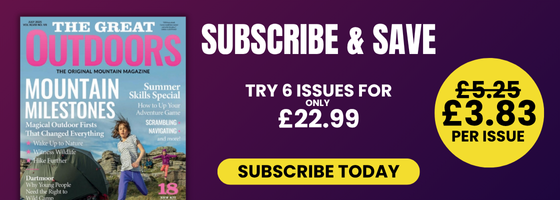Main image: Taking part in a mock rescue operation in British Columbia with Squamish Search and Rescue team | Credit: Michael Overbeck
This is an advertising promotion in collaboration with our friends at Helly Hansen.
Norwegian brand Helly Hansen has a long-standing reputation for professional-grade gear – the kind of kit that will keep you warm, dry and safe, no matter how harsh the environment. Since it all started in 1877, the brand has been helping hikers, sailors, skiers and mountaineers “stay and feel alive” (as the slogan goes) for almost 150 years. A century and half after being founded in Norway, when sea captain Helly Juell Hansen found a better way to stay protected from the harsh Norwegian elements, the brand is still trusted by outdoor professionals. Helly Hansen gear is worn by professionals on oceans, mountains and worksites across the globe. It is the number one apparel brand for ski professionals, for example, whilst Helly Hansen sailing gear is worn by world-class sailors across all five oceans.
Helly Hansen also works extensively with search and rescue organisations across the globe, including Norwegian People’s Aid, Dublin & Wicklow Mountain Rescue in Ireland, Mountain Rescue England & Wales, and Scottish Mountain Rescue to name but a few. These partnerships provide the teams with the professional-quality kit and equipment they need to carry out life-saving work in remote places and brutal weather.
But in Canada, Helly Hansen has a particularly strong partnership with Squamish Search and Rescue (SSAR), donating profit and supplying top-of-the-range kit to support the incredible “dedication, training and life-saving actions of these amazing people”, as the brand puts it.

Taking part in a mock rescue operation with Squamish Search and Rescue team. Credit: Michael Overbeck
Why is the work of SSAR needed in British Columbia?
Helly Hansen describes it this way: “because of volunteer organisations like SSAR, we can venture deep into the wilderness – nature is beautiful but unpredictable, and in the event that something goes wrong, SSAR members are on call 24/7 to bring us home safely”.
The town of Squamish, which is located to the north of Vancouver on the shores of Howe Sound, is known as the adventure capital of Canada – a hub for intrepid outdoor pursuits in the often hostile terrain of British Columbia. This means the area has a high incidence of backcountry emergencies and, therefore, the work of SSAR – which covers a huge area from Porteau Cove to the southern boundary of Whistler and the Squamish Valley – is absolutely vital.
It is a volunteer-led, community-based organisation comprised of a diverse group of volunteers, spanning a multitude of technical backgrounds, and this is what Helly Hansen is particularly proud to support. I was lucky enough to spend a few days with the SSAR team in Canada and get some hands-on insight into their life-saving work.

Incredible views across Garibaldi Lake and the surrounding mountains from the summit of the Panorama Ridge trail. Credit: James Forrest
Firstly, I was struck by how ‘wilderness’ is an overused and incorrectly used word in British outdoor circles, but in Canada it is apt. Here there is real wilderness: remote backcountry with little in the way of permanent human presence for hundreds of miles.
What on earth happens if you get injured or lost in such a place? That’s where clever strategies, techniques and high tech are needed to save lives and help those in need. Following are three things I learnt from my memorable experience with the inspiring Squamish Search and Rescue team…
- STRETCHER RESCUES ARE HARD, HARD WORK
I knew it would be difficult, but not this difficult. Taking part in a mock rescue of a ‘casualty’, a team of six journalists including myself attempted to carry the injured party by stretcher out of a forest. The task seemed simple – a two-kilometre walk along good paths. We made it about 100m before giving up. Even with six people helping, the weight of the stretcher was completely energy-sapping, and manoeuvring around trees, boulders and bushes was infuriatingly awkward. Our failings were testament to the real skill, dedication and brute strength of the Squamish SAR volunteers.

Taking part in a mock rescue operation with Squamish Search and Rescue team. Credit: Michael Overbeck
- A RECCO REFLECTOR IS NOT JUST FOR WINTER, IT’S FOR ALL SEASONS AND ALL SPORTS
Perhaps best-known for use in avalanche rescues, RECCO reflectors aren’t particularly well-known or widely used in the UK [find out more about the nature of avalanche risk on p51 of this issue – Ed], and before visiting British Columbia I incorrectly believed they were winter-only products. But in Canada they are saving lives day in day out, all year round.
How do they work? A RECCO detector used by rescue professionals emits a directional radar signal, like the beam of a flashlight. When the signal hits a RECCO reflector, it is echoed back to the detector and pinpoints the rescuer to the direction and location of the victim. You can either buy a standalone reflector (to stick or clip to your gear), or purchase clothing or equipment with an integrated one. But remember that it’ll only work if rescue professionals own and operate a RECCO detector system – this is common in the Alps and further afield, but less so in the UK.
- HELICOPTERS CAN SCAN FOR MISSING PERSONS AT 100KPH
As part of our series of mock rescue operations, we took to the skies in an Airbus AS365 Dauphin helicopter to experience the power of rapid outdoor searching. Dangling below the helicopter on a winch was a humongous and ultra-powerful RECCO scanner, capable of surveying a 100m wide corridor at speeds of up to 100kph, or a complete square kilometre in just six minutes. It was an eye-opening experience, and clear proof that carrying a RECCO device can rapidly improve your chances of a quick rescue if things go wrong.

Learning about how an Airbus AS365 Dauphin helicopter can carry out rapid outdoor searching using RECCO technology. Credit: Michael Overbeck
4 items of outdoor kit with RECCO
Billed as the outdoor brand ‘trusted by professionals’, Helly Hansen sponsors mountain rescue teams across the globe, providing kit and clothing capable of standing up to the worst of weather conditions – and Squamish SAR is one such team. Here are four items of kit used or recommended by Squamish SAR that feature integrated RECCO devices.
1. Helly Hansen Odin 1 World Infinity Shell Jacket (£460)
A resilient yet lightweight three-layer waterproof featuring Helly Hansen’s LIFA Infinity membrane, this jacket has good eco credentials and will keep you dry in the heaviest of downpours.
2. Helly Hansen Transistor Backpack RECCO (£130)
New for 2023, this 30-litre backpack – which features a hydration bladder sleeve, 3D air mesh back panel system and multi-pocket storage options – has been updated to include an integrated RECCO.
3. Helly Hansen Odin Pro Shield Jacket (£180)
Like a crossover between a softshell and a fleece, this versatile hybrid jacket combines durable weather protection with cosy warmth – and the peace of mind of an integrated RECCO reflector.
4. Helly Hansen Odin Huginn 2.0 Pant (£160)
Warm, robust, water-resistant and windproof, these hiking trousers are made from a very comfortable and stretchy softshell material, with a RECCO reflector sewn into the fabric.
Read more: Chris Townsend heads up Stac Pollaidh with Assynt Mountain Rescue








